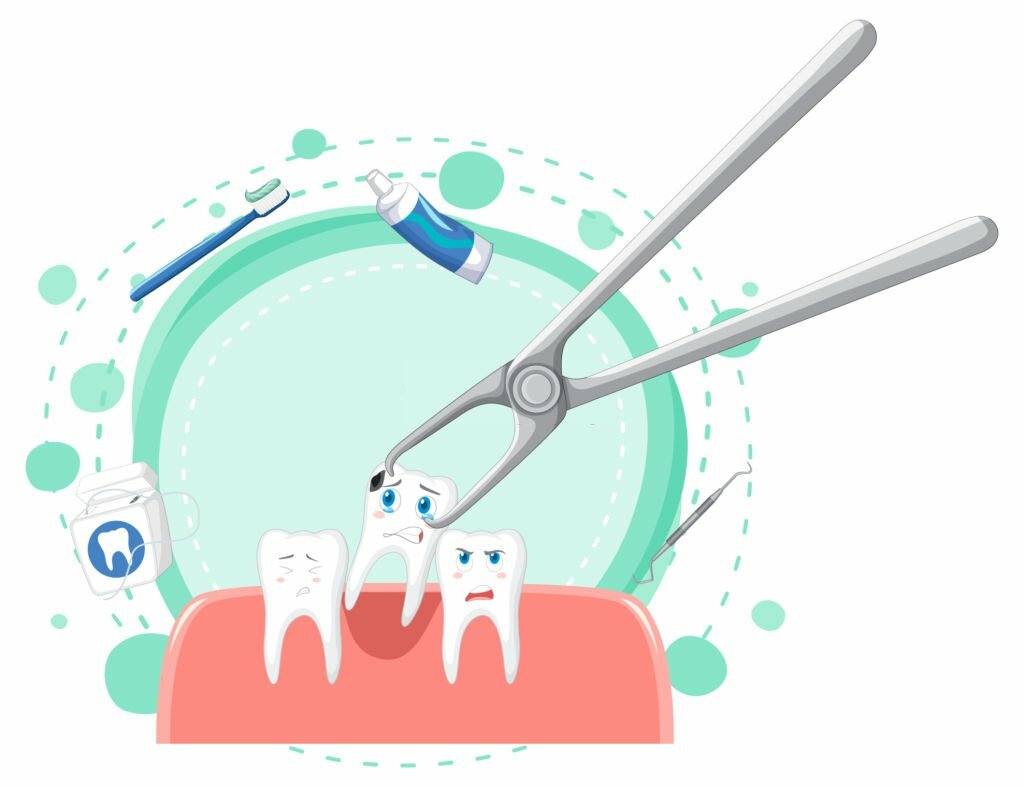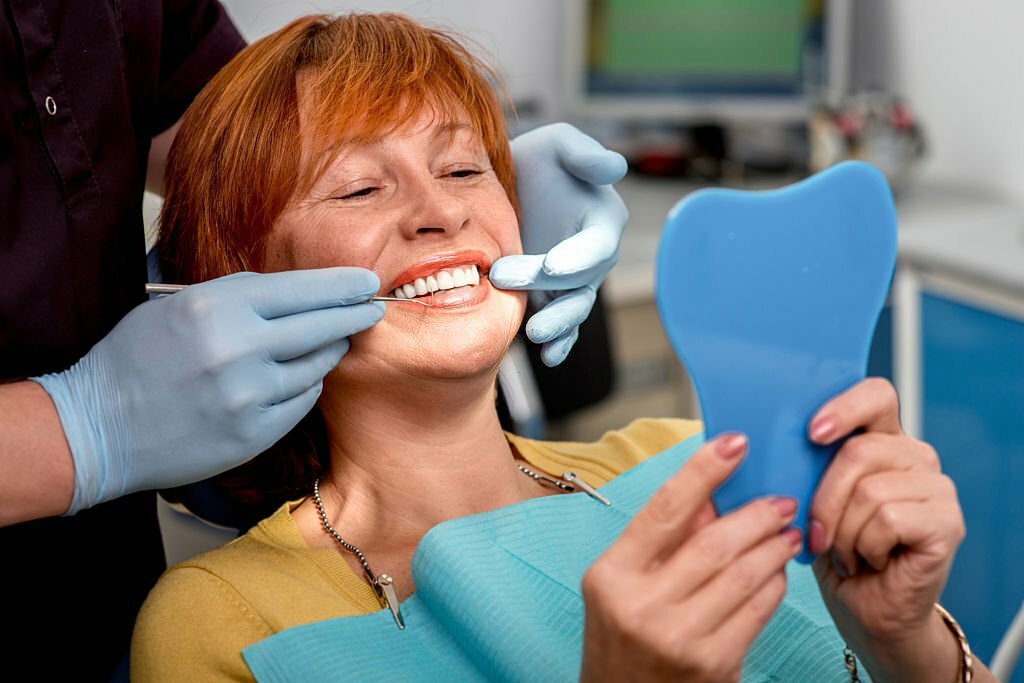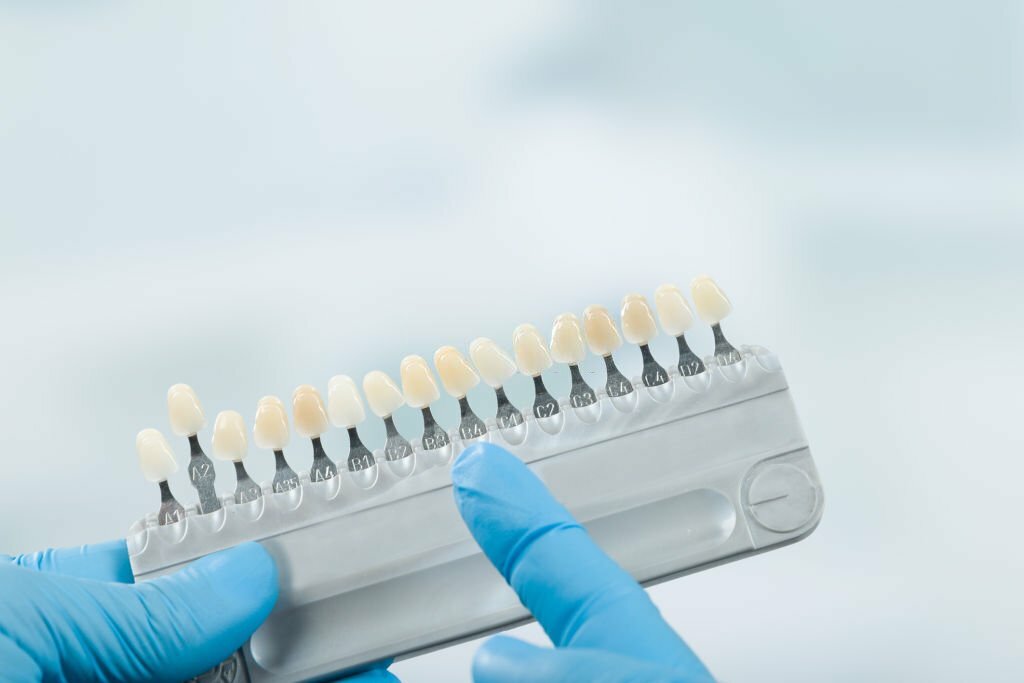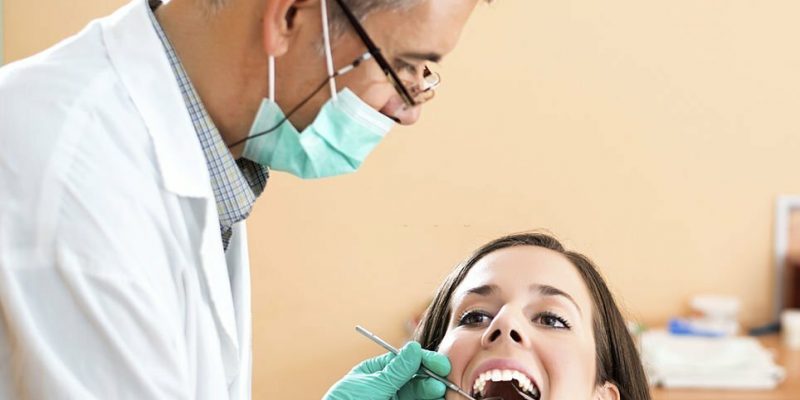Did you know that around 10 million wisdom tooth is removed from individuals every year?
Tooth extraction is a standard procedure followed by many dentists. While it can be done for various reasons, it is mostly done when your tooth is severely damaged or decayed.

Tooth extraction is also helpful in eliminating bacteria and improving your overall oral health.
In this blog, we take a closer look at:
- What Is Tooth Extraction – Why Is It Recommended?
- What Happens Before A Tooth Extraction?
- The Tooth Extraction Procedure In Detail
- Tooth Extraction Aftercare
- Home Remedies For Pain
- When To See A Dentist About Tooth Removal?
Let’s learn more about tooth extraction in the following sections.
What Is Tooth Extraction – Why Is It Recommended?
A tooth extraction is an oral procedure where a dentist removes your tooth completely (including the roots) from its socket. The process of teeth removal is sometimes also referred to as ‘pulling’ a tooth.
While healthcare providers mostly try to preserve your natural teeth whenever possible, sometimes restorative methods aren’t enough. Your dentist will recommend tooth extraction if it has moved beyond a point of repair.
Here are some possible instances where your dentist might recommend tooth extraction:
- Crowded teeth.
- A fractured tooth.
- An impacted tooth.
- Severe gum disease.
- Tooth luxation or other dental injuries.
- Severe tooth decay (cavities).
Now that we know why extraction of teeth is necessary let’s focus on what happens before the process in the following section.
What Happens Before A Tooth Extraction?
Before extraction, your dentist will examine the impacted tooth and the surrounding gums. They will also analyze the current physical condition of your oral cavity by taking X-rays and determining the amount of damage and bone density.
Besides, ensure your dentist knows all the vitamins, supplements, and drugs you intake during the initial consultation. Once they have all the required information, they will review the treatment and sedative choices.
The Tooth Extraction Procedure In Detail
Step 1: Numbing your tooth
The process of tooth extraction in San Antonio begins with your dentist administering an anesthetic injection to numb the gum tissue, bone, and tooth surrounding the area. This step is crucial as it minimizes pain and discomfort.
Step 2: Extraction of the tooth
The dentist will pull the tooth from the socket using elevators and extraction forceps. An adult tooth removal treatment may be required if the tooth is sometimes deeply rooted.
In other instances, bone pieces or spurs will be removed as well. You may feel some pressure during the removal, but no discomfort should exist.
Step 3: Closing the space vacated by the tooth
After the tooth is extracted, the dentist will clean the region to remove any bone pieces or spurs. They will also sew up the gum tissue to avoid infection and stop bleeding.
If bone pieces remain, they may cause discomfort and inflammation, which can be relieved with medicine or removed later.
Step 4: Controlling bleeding
Once the tooth is pulled out, your dentist in San Antonio, TX, will apply gauze to the extraction site and instruct you to bite down on the gauze with firm pressure to prevent bleeding. You may need to apply strong pressure to the bite for up to an hour.
Some bleeding is usual when the gauze is removed, and the dentist may suggest you bite on a moist tea bag for 30 minutes to aid with clotting.
Step 5: Minimising the swelling
The dentist may offer you an ice pack to lay on your cheek to minimize swelling and irritation. For the first 24 hours following the tooth extraction, you can use it for up to 20 minutes at a time, at 20-minute intervals.
Tooth Extraction Aftercare
Following the extraction, your dentist will provide you with a full list of post-surgical instructions. Here are some broad recommendations to help you recover quickly:
Maintain a clean extraction site. Gently rinse the region with an antibacterial mouthwash twice or thrice daily. However, avoid brushing straight over your extraction site until your dentist says it’s safe. Brush and floss normally in all other places.

Take all drugs exactly as prescribed. Your dentist may prescribe antibiotics and pain medications. All of these drugs must be taken exactly as prescribed. Over-the-counter pain medications such as ibuprofen and acetaminophen are also available.
Besides, once the front teeth extraction is complete, avoid heavy activities for a few days. A higher heart rate might result in more post-operative bleeding and pain. For the first 48 to 72 hours, avoid going to the gym. Consult your dentist to determine when it is safe to resume normal activities.
Home Remedies For Pain
It is common to feel pain and discomfort once your tooth is removed. However, these instances aren’t threatening and can be tackled with simple home remedies.
Here are some solutions to ease your pain:
-
NSAIDs:
NSAIDs or Nonsteroidal anti-inflammatory drugs, such as naproxen and ibuprofen, may help reduce swelling and pain.
-
Ice packs:
Apply an ice pack (wrapped in a towel) to the affected area for 20 minutes to reduce pain and swelling.
-
Saltwater rinses:
Include saltwater rinses into your daily routine after a tooth removal. This process helps kill bacteria in the mouth and reduces swelling and pain.
When To See A Dentist About Tooth Removal?
When considering tooth extraction, it is critical to contact a dentist to determine the best course of action. The dentist can assess the situation and determine whether extraction is the best option.

Your dentist will recommend removal if:
- The tooth is damaged beyond repair.
- The tooth is decaying.
- You have a periodontal disease or an infection.
- You have overcrowded teeth set up in your mouth.
Takeaways
- Around 10 million wisdom tooth is removed from individuals every year.
- A tooth extraction is an oral procedure where a dentist removes your tooth completely (including the roots) from its socket.
- It is common to feel pain and discomfort once your tooth is removed.
- Experience painless tooth removal with our experts at Heritage Dental Sanontanio today!

